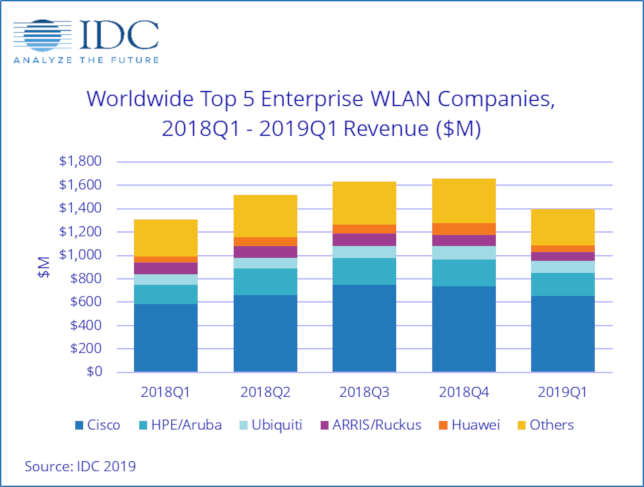WiFi 6 Contributing to Continued Growth in Wireless Networking Hardware
The immediate future looks bright for the wireless hardware market, according to a report from market research firm IDC. In the first quarter of 2019, spending on wireless technologies increased 6.9 percent overall, with enterprise outpacing consumer growth (7.1 percent versus 6.6 percent). That growth will continue thanks in part to WiFi 6, the next iteration of the 802.11ac standard, also referred to as 802.11ax.
Total worldwide spending on WiFi technologies was $2.4 billion, with enterprise spending accounting for $1.4 billion of that.
According to IDC, “The enterprise WLAN is now dominated by the 802.11ac standard, which makes up 86.4 percent of dependent access point (AP) shipments and 93.1 percent of enterprise WLAN dependent AP revenues. The next iteration of the standard, 802.11ax also known as WiFi 6, will increase in the market throughout the rest of 2019 and into 2020. In the consumer WLAN market, the 802.11ac standard accounted for 58 percent of shipments and 79.2 percent of revenue in 1Q19.”
IDC added: “The market is being driven by enterprises continuing to upgrade their wireless infrastructure as users and devices rely on an increasing array of bandwidth-heavy applications.”
The top five WLAN vendors for the quarter were:
-
Cisco, which commanded 46.8 percent of the worldwide market, up 2.5 points from the same quarter last year;
-
Aruba-HPE, with a 14.1 percent market share (up 1.5 points);
-
Ubiquiti, with a 7.3 percent market share;
-
ARRIS/Ruckus, with a 5.2 percent market share; and
-
Huawei, which captured 4.2 percent of the global market.

For more information, go to IDC’s Worldwide Quarterly WLAN Tracker.